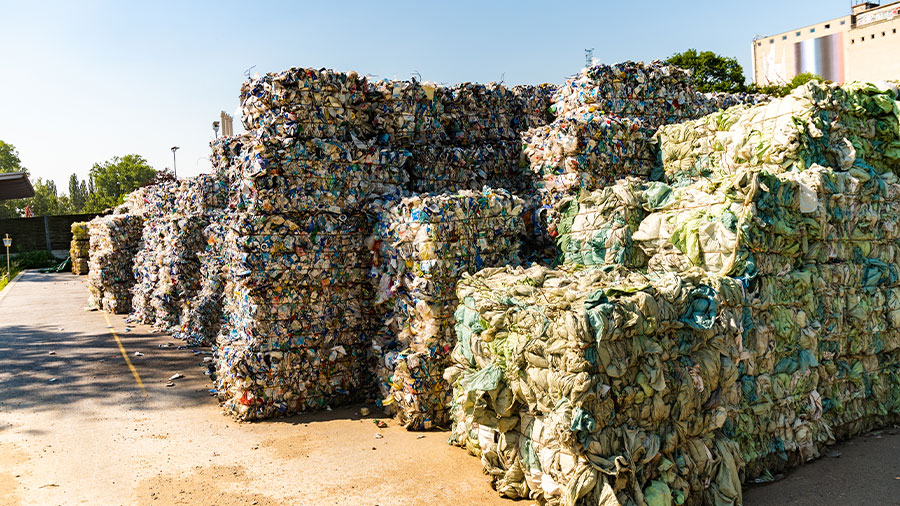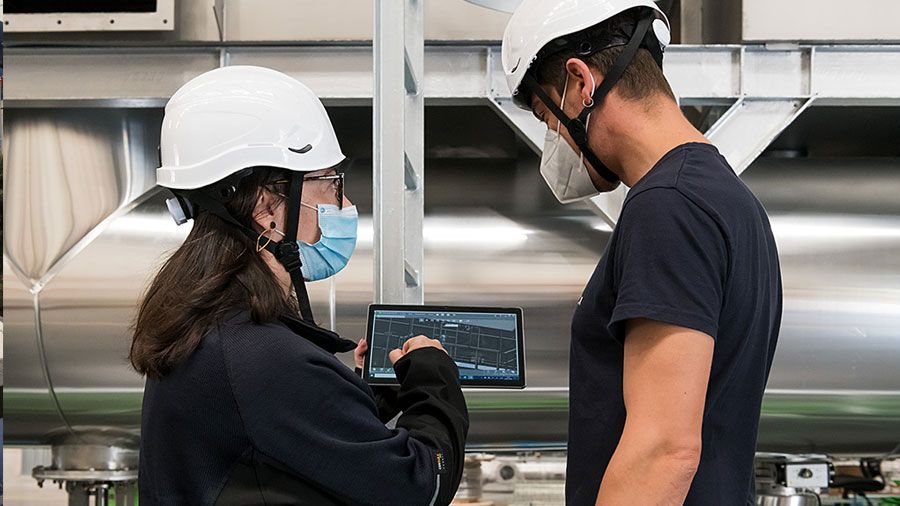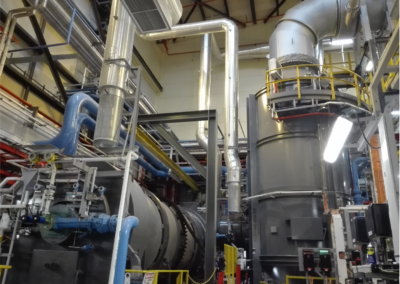Controlled pyrolysis or gasification
OXIDATION OF ORGANIC MATTER
Tecam’s controlled pyrolysis
Controlled pyrolysis or gasification is the process by which organic matter is partly oxidised. The oxygen content is regulated, with less than the stoichiometric amount added in order to be able to control the combustion process. The operating temperature is usually higher than it is for pyrolysis (750 °C) owing to the fact that partial oxidation takes place, which generates energy and increases the temperature inside the kiln
This process also generates syngas, which is a mixture of carbon monoxide, hydrogen, carbon dioxide, water and nitrogen. Additionally, it generates solid waste and inert, non-combustible materials such as heavy metals.


Is controlled pyrolysis environmentally friendly?
Waste Valorization has become the alternative technology for energy recovery that has minimum impact on the environment and is capable to generate heat and electricity. Pyrolysis plants and waste incineration plants include flue gas treatment systems afterwards that collect and eliminate the gases generated, following an efficient and safe procedure, to guarantee maximum respect for people and the environment.

Where is this technology applied, and what are its advantages?
These systems are used to treat urban waste, plastics and sewage sludge.
It represents the first phase in the combustion process and is intended to achieve gasification (i.e. extract the volatile compounds from the waste) so that it is easier to oxidise the waste in the second oxidation chamber.
At the same time, it also generates syngas, which can then be used to produce energy and/or reused in other processes.
What does the process consist of?
- Pre-treatment: this may consist of drying or other preparatory measures.
- Input device: this is a series of valves that make it possible to control the feeding of the waste. The main purpose of this device is to allow the waste to enter while preventing air from entering the kiln from outside.
- Rotary or static kiln: this kiln has a cylindrical, horizontally positioned body that rotates on its axle, allowing the solid waste inside to decompose.
- Air intake fan: this controls the amount of oxygen. It usually operates on the basis of 30 % of the stoichiometric amount, i.e. only the stoichiometric amount of oxygen required to oxidise 30 % of the waste is added.
- Extraction of ash and fixed carbon: the waste material contains a certain amount of compounds that cannot be gasified, and generate ash and fixed carbon (char) as a result. Furnaces must be fitted with a device to extract these waste materials, cool them and send them on to be treated.


The Tecam service
At Tecam we offer a comprehensive range of services and a close, collaborative, continuous working relationship to address your emissions- and waste-related problems. We will advise you in your search for solutions, provide you with the necessary technology to implement your chosen solution, and accompany you in your daily operations in our capacity as your technology partner.
Specialists in the sectors that are most sensitive to environmental impacts
We drive sustainable productivity and innovation for industries with more extensive and more complex needs.
Related news
How to Address the Challenges Faced by Environmental Managers in the Industrial Sector
How Tecam can help industrial companies’ environmental managers tackle challenges and turn environmental obligations into opportunities for improvement and leadership.
Waste Treatment and Generation of By-products: Key to a Sustainable and Safe Industrial Environment
In a world where sustainability is the new norm, proper waste disposal is more essential than ever. Implementing waste valorization and reuse practices not only meets environmental needs but also proposes economically viable and socially responsible solutions....
Tecam to showcase its emissions abatement and waste valorisation technologies for the process industries at Achema 2024
Tecam is ready to showcase its cutting-edge environmental technologies designed for emissions abatement and waste valorisation at Achema 2024, a premier gathering for the chemical, pharmaceutical and process industries taking place from 10-14 June 2014 in...



















